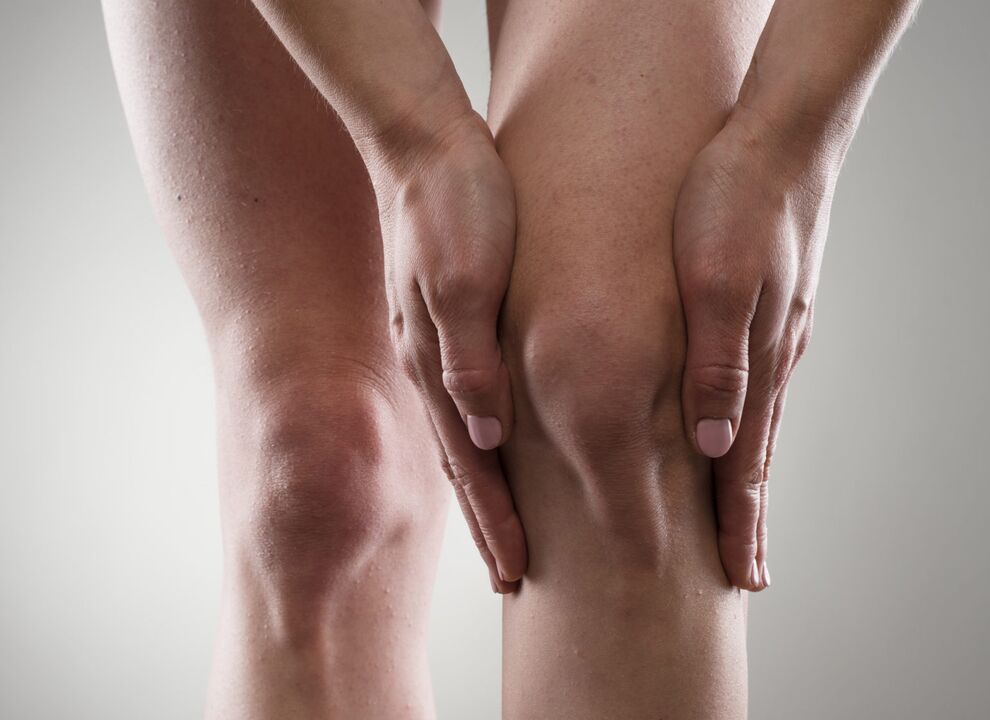
Arthrosis of the knee joint (deforming osteoarthritis of the knee joint, DOA, gonarthrosis) is called degenerative-dystrophic changes in joint structures, in which the cartilaginous layer between bone elements first thins and then collapses. At the initial stage, the patient experiences discomfort and a slight restriction of mobility, then the joint is deformed, it completely loses its functions due to the destruction of the cartilage. Acute arthrosis is very painful and is accompanied by a significant decrease in the patient's physical activity. If the treatment of gonarthrosis of the knee joint is not started in time, the patient may remain disabled.
For reference:According to statistics, every fifth adult in the world suffers from osteoarthritis of the knee joint. Osteoarthritis of the knee can be unilateral or bilateral, in women the pathology is diagnosed twice as often as in men. People over 45 often face the problem of joint deformation as a result of age-related changes in the body. If this diagnosis is given to young people, the cause is usually trauma.
Why does pathology develop?
The knee joint is one of the most complex parts of the human body. It carries most of the load during walking and other movements. It is not surprising that with age its elements begin to wear out and lose their functions. At first, the cartilage layer in the articular joint loses its elasticity and elasticity, then it dries up and cracks. The shock-absorbing properties of the cartilage decrease, and this is exactly what causes discomfort and pain when moving: the blows and impacts of the articular structures are no longer softened by anything, the bones are gradually exposed and rub against each other. .
Deforming arthrosis of the knee joint in old age is an optional phenomenon, not everyone is diagnosed. There are a number of provoking factors, the combination of which leads to joint pathological changes.
The most common causes of pathology are the following:
- excess weight - the joint must withstand additional loads;
- Osteoporosis is a pathology in which the demineralization of bone tissue occurs;
- chronic diseases associated with metabolic disorders in the body;
- traumatic sports - gonarthrosis is often called a disease of football players due to the frequent trauma of the knee joint;
- some types of occupational activity associated with heavy physical activity - arthrosis and arthrosis - are found in loaders;
- spinal injuries in which the distribution of loads in the joints of the lower extremities is disturbed;
- hereditary predisposition.
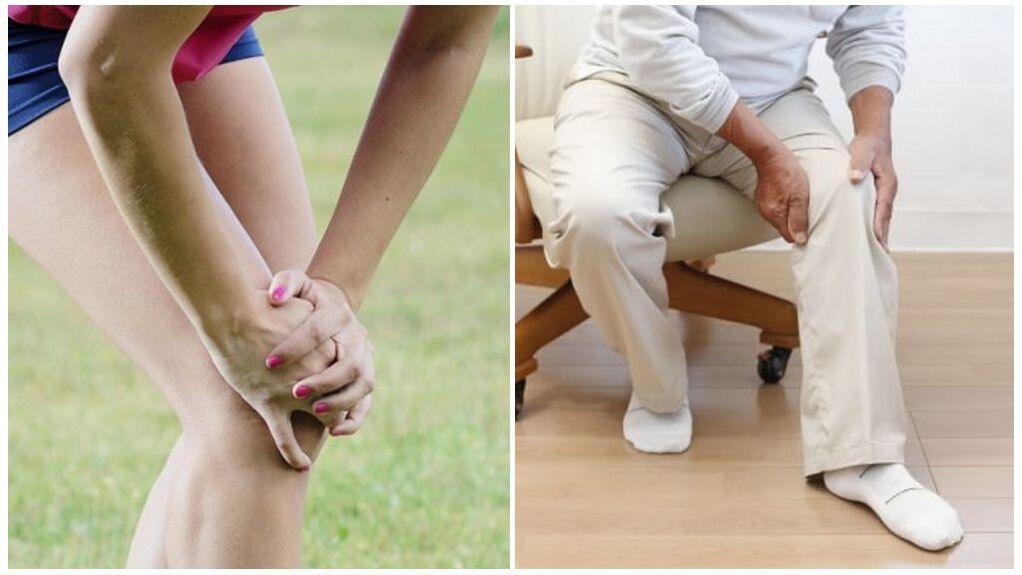
Articular cartilage does not wear out immediately. In the early stages, the manifestations of the disease are absent or insignificant, the patient does not consult a doctor and does not take any measures to stop the pathological process. But if dystrophic changes are still identified, the patient has time to start treatment and prevent irreversible changes. To do this, you must first determine what are the main symptoms of arthrosis of the knee joints.
How to recognize the disease
Symptoms of arthrosis of the knee joint appear at the stage when the cartilage is already thinned and begins to deteriorate. Grade 1 gonarthrosis may not make itself felt for years. But later, careful patients remember that they still felt atypical symptoms, they just did not pay much attention to them, because they were not constant and did not cause much discomfort.

You can suspect the destruction and inflammation of the right or left knee joint based on the following specific symptoms:
- joint morning stiffness;
- restriction of mobility after a long stay in one position;
- discomfort in the knee when climbing stairs - burning sensation, tenderness;
- night pain in the knees;
- pain after physical labor or sports;
- periodic sudden weakness of the lower extremities. If right-sided gonarthrosis or left-sided gonarthrosis develops, only one affected leg gives way.
But still, the main symptom of the destruction of the knee joint remains pain. They can have different intensity and sometimes decrease. However, as the pathologies progress, they appear more often, become more intense and, in the absence of physical activity, disturb the patient even at rest. Based on the severity of the symptoms, the doctor can determine the stage of the disease.
- Manifestations of the 1st stage of pathology:the pain is not yet a concern, the patient may feel rapid fatigue when doing sports or physical activity, a slight limitation of joint mobility after a long rest. X-ray will show a slight narrowing of the space between the bones of the joint, an uneven surface of the cartilage with slight compressions.
- For 2 degree gonarthrosissymptoms appear brighter and more frequent. The patient usually already realizes that something is wrong with their knees. After physical exertion, when the weather changes, the joints hurt and "twist". Even the most subtle movements result in pain in the knee. If a person rests his leg, the pain will go away. But under load they will go on again. Also, at this stage of the pathology, there may be a characteristic crisis in the knee when bending and extending the leg, difficulty and pain in the knee when trying to bend the leg more than 90 degrees. X-ray will show a change in the shape of the joint cup and the presence of fluid in the joint cavity.
- Gonarthrosis 3 degreescharacterized by severe pain that occurs regardless of whether the limb is bearing weight or at rest. The painful joint is especially painful at night and when the weather changes. The patient can no longer bend his leg at the knee, so his physical activity and performance decrease. X-ray clearly shows degenerative changes in articular tissues. Deformation is also visually noticeable with the naked eye. The patient's legs are bent at the knees like the letter "o" or "x", which ultimately leads to the inability to move independently, without support, and to perform most of the usual professional and household tasks. A person becomes disabled.
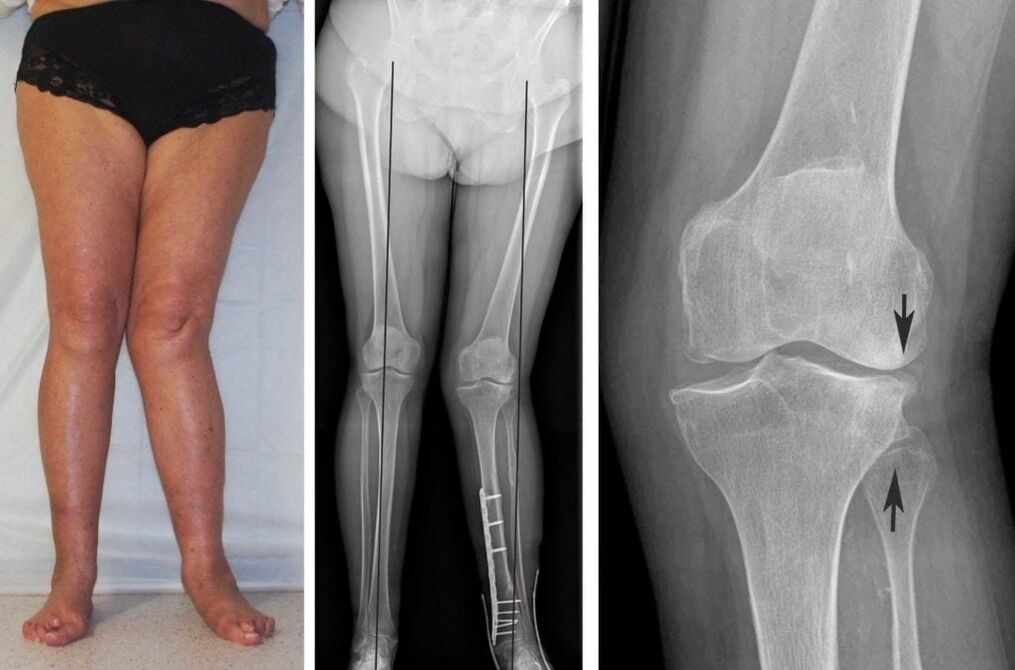
Typically, patients turn to the doctor in the second stage of the disease, mainly to find an effective medicine for knee pain. It is quite difficult to identify gonarthrosis in the first stage, because the symptoms are mild and only small changes are visible on X-rays. It is possible to detect pathological changes in the joint only with a comprehensive examination.
Diagnostic methods
Diagnosis begins with a visual examination and questioning of the patient. What will indicate the possible development of gonarthrosis:
- growth and change in the shape of the knee joint;
- a different crisis when the kneecap dislocates;
- pain during joint palpation;
- limitation of joint mobility.
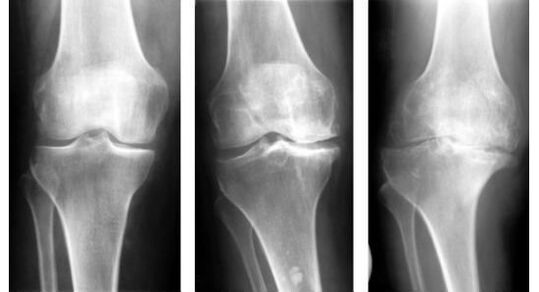
Degenerative changes in the cartilage tissue may not be visible in the early stages, so CT and MRI are additionally recommended. With the help of modern diagnostic methods, the doctor can accurately determine the extent to which the joint is affected, whether there is inflammation and fluid accumulation in the joint cavity, and also distinguish knee arthrosis from other pathologies.
Classification
In modern orthopedics, there are two main types of osteoarthritis of the knee joints:
- primary gonarthrosis;
- secondary gonarthrosis.
The initial form of the disease develops spontaneously due to age-related changes or metabolic disorders. Secondary is the result of another disease, injury or failed surgery. Post-traumatic osteoarthritis of the knee can develop several months after a sprain, subluxation or fracture. According to the nature of the course, arthrosis is classified as acute and chronic. The acute form of the disease is easier to treat.
Official medicine for gonarthrosis
Complex treatment of arthrosis of the knee joint begins only after the final confirmation of the diagnosis. If the patient's condition is not critical, doctors will first of all try to stop the development of the pathology with the help of drugs. Physiotherapy, massage and manual therapy are used as additional methods.
The main goals of complex therapy:
- relieve pain and discomfort;
- restore joint mobility;
- stop the destruction of the cartilage layer and, if possible, restore it.
Important points are physical therapy and following a special diet. There are exercises and products that work to repair damaged joint tissues and help restore mobility at least partially. If you consult a doctor in time, these measures are enough for the knee joint to start working again.
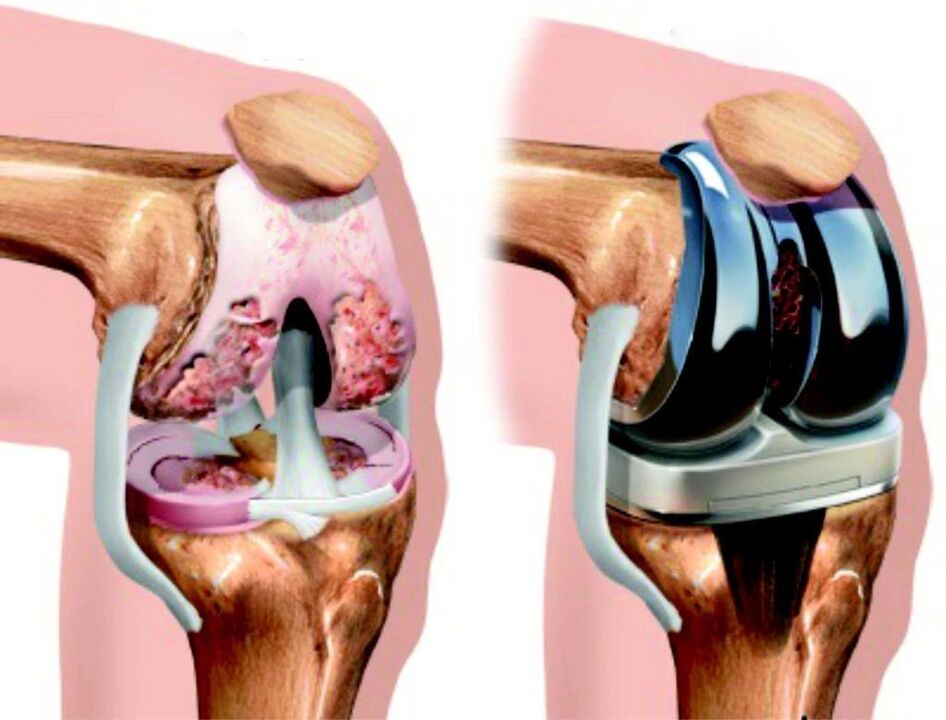
But if the disease has reached the third stage, the joint is seriously damaged, and even the most expensive drugs will not help to restore it. Surgery will be required to preserve at least partial function of the limb. It consists of removing the remnants of the affected articular structures and implanting an implant, the procedure is called endoprosthetic.
Drug treatment of gonarthrosis
A drug complex of various groups and actions is used to eliminate the unpleasant symptoms of the disease, restore and strengthen the joint.
- Nonsteroidal anti-inflammatory drugs- joint treatment begins with them, quickly relieves pain, swelling, fever, partially stops the inflammatory process. However, they cannot be taken for a long time, because the active components in their composition have an extremely negative effect on the functions of the digestive system and blood composition. Typically, the course of treatment with NSAIDs does not exceed 5-7 days. Medicines can be in the form of tablets for internal use or in the form of ointments and gels for external use.
- Chondroprotectors- these are drugs that improve the nutrition of cartilage tissue, restore their strength and elasticity. Chondroprotectors also partially relieve pain and swelling. However, such drugs do not have an immediate effect. The first effect will be noticeable a few weeks after the start of the therapy course. It is recommended to take chondroprotectors for at least six months.
- Hormonal drugs.They are also called corticosteroids. If the pain is very severe and inflammation develops even after taking NSAIDs, drugs containing hormones are used. They are administered intramuscularly or directly into the joint cavity as an injection. Such drugs immediately relieve pain, reduce swelling and inflammation. However, they have a number of contraindications and more side effects than non-steroidal anti-inflammatory drugs, so they are prescribed in extreme cases. Hormonal drugs can be bought in pharmacies only with a doctor's prescription. Corticosteroids are stopped immediately after the patient's condition improves.
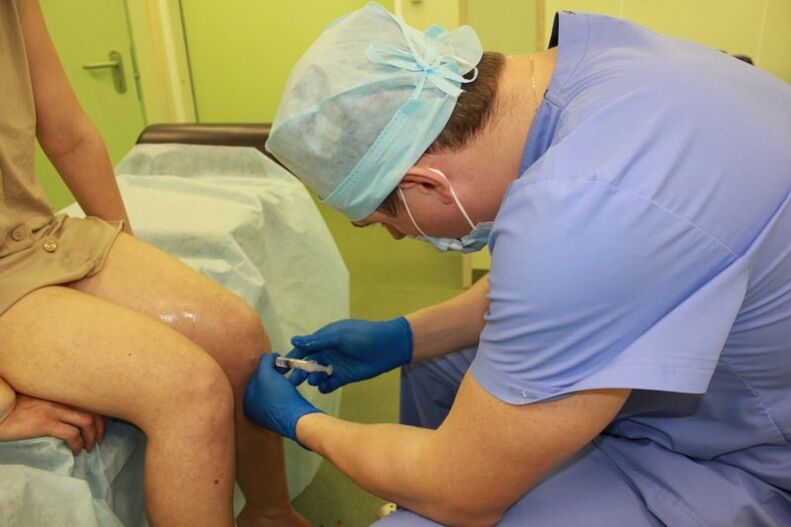
The treatment is completed with intra-articular injections of hyaluronic acid. This substance stimulates the production of synovial fluid, saturates the cells with moisture, restores their elasticity, firmness and prevents wear. The cost of the procedure is quite high, but the effectiveness is worth the cost.
In the note:Of all the drugs listed above, only chondroprotectors affect the cause of the disease. They stimulate the regeneration of destroyed cartilage tissue and prevent damage to surviving cartilage cells. But these drugs are expensive, and to get a noticeable and lasting effect, you need to take them continuously for several months, sometimes even years. For many patients, especially retirees, the cost of full treatment is often prohibitive.
Non-traditional treatment methods
Patients who experience for the first time what knee arthrosis is and what unpleasant symptoms it manifests, always have several available remedies, if there are no pharmacies and drugs. People suffering from gonarthrosis and knee pain prepare tinctures, rubs and ointments based on medicinal plants in advance - almost all recipes require time and fresh raw materials available only in the spring-summer season.
Treatment with dandelions
With the help of this medicinal plant, there are several ways to strengthen the joint and restore its mobility, to get rid of unbearable pain. The simplest is to eat five heads of dandelions every day during the flowering period. This should be done on an empty stomach, after rinsing the flowers with boiled water. A tincture is also made from dandelions to rub the joints.
The cooking recipe is as follows:
- Collect exactly 50 open dandelion heads.
- Place in a dark glass bottle with a tight stopper.
- Pour 300 ml of good vodka or triple cologne.
- Infuse for a month away from sunlight, shaking the container from time to time.
- Without expression, transfer to the first aid kit, use it before going to bed to rub the painful knee, then wrap the joint warmly and sleep under the blanket.
There is another interesting recipe against arthrosis of the joints using dandelion. First, you need to collect and dry the leaves of the plant. Then pour boiling water and let it steam for half an hour. The resulting mixture should be chewed slowly and thoroughly for the time it takes to take exactly 3, 000 steps.
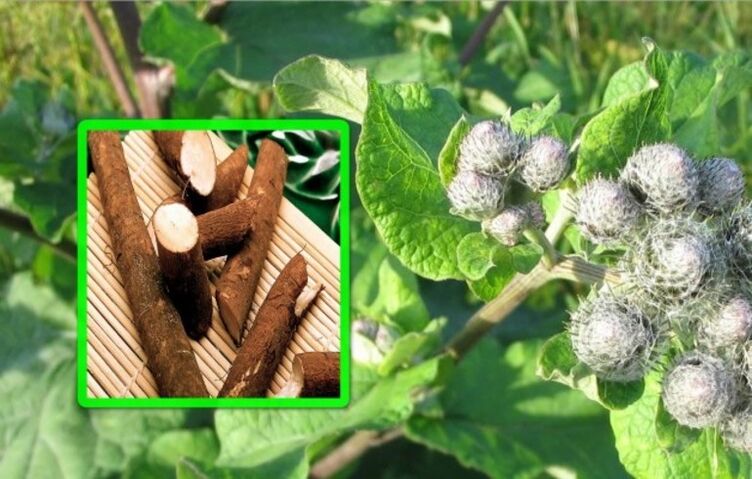
Recipes with burdock
The simplest recipe:
- choose two or three young leaves of the plant and wash them with cold water;
- Crush the leaves lightly to release the juice;
- Apply to the affected joint and cover with a bandage.
Keep this "compress" overnight, remove it in the morning and discard the leaves. Repeat the procedure every day for three weeks.
To increase the effect, traditional healers recommend anointing the knee with cinquefoil oil before applying burdock. It is very easy to prepare. Two tablespoons of chopped cinquefoil are poured into 250 ml of any refined vegetable oil without fragrance. The oil should be well preheated, but not boiled. Leave the mixture for two weeks, then the oil can be used to treat joints.
Turpentine, egg and other joint means
Using the yolk of a chicken egg, you can prepare an effective rub for painful joints. It is prepared in this way:
- Lightly beat one yolk in a bowl.
- Add a small spoonful of turpentine and mix.
- Then pour a large spoonful of vinegar and beat again.
The mixture is stored in the refrigerator and used before going to bed. After rubbing, the knee is wrapped with a warm cloth overnight. In the morning, it is necessary to remove the bandage and rinse the remaining product with warm water, and then apply any anti-arthrosis ointment.
Remember that all home-made preparations are effective only immediately after preparation, they are not stored for a long time (with the exception of alcoholic tinctures, which can be stored in a dark and cool place for up to six months). Don't expect instant results. Folk remedies act on a cumulative system; permanent relief will come only after three to four weeks of regular use of home remedies for knee osteoarthritis. In later stages, they will not be effective and will only help temporarily reduce pain and swelling.
Summary:Osteoarthritis of the knee joint or gonarthrosis is one of the most common lesions of the musculoskeletal system in elderly people. In young people, it occurs after an injury or during excessive physical exertion. The disease can be completely cured only in 1-2 stages with a competent and comprehensive approach. In the third stage, it is necessary to resort to endoprosthetics to restore at least partial limb functions and prevent complications.

























